Get 10 Free Proxies For Slack
Whether you're collaborating on projects with remote team members or coordinating with colleagues across different time zones, using a proxy with Slack can improve your communication experience.
So what makes a proxy valuable for Slack users? Proxies serve multiple purposes—they help professionals access their workspace in countries with restricted internet, provide an extra layer of security on confidential client discussions, and offer IT teams more control over organizational data flow. Using the right proxy ensures your team conversations continue seamlessly regardless of network limitations or security concerns.
In this guide, we'll walk you through everything you need to know, from selecting the right proxies to configuring them on different devices, verifying their functionality, and even removing them when needed.
Before starting: Get free proxy for Slack
Before configuring your device to use a proxy, you need to obtain reliable proxy servers. One important factor to look out for is free trial options so you can test their performance before purchasing.
If you’re just getting started, Webshare offers a free starter package of 10 high-quality proxies (no credit card info required). These proxies are permanently available for free, making them perfect for light usage.
To claim them, navigate to the Webshare website and create an account under the free plan. Once registered, simply log into your dashboard and find your complimentary proxies in the Proxy List menu.
Easiest method: Slack proxy for Chrome
Webshare's Chrome extension is the simplest way to connect Slack through a proxy. This lightweight tool eliminates complicated configurations and only redirects browser traffic through your proxy, leaving other applications on your regular internet connection.
Here’s how to set up a proxy for Chrome without disrupting your entire system's network settings:
Step 1: Install the Chrome Extension
Visit the Chrome Web Store on your browser and use the search bar to search for Webshare Proxy Extension. Once the extension page opens, click the Add to Chrome button to automatically download and install the extension on your browser.
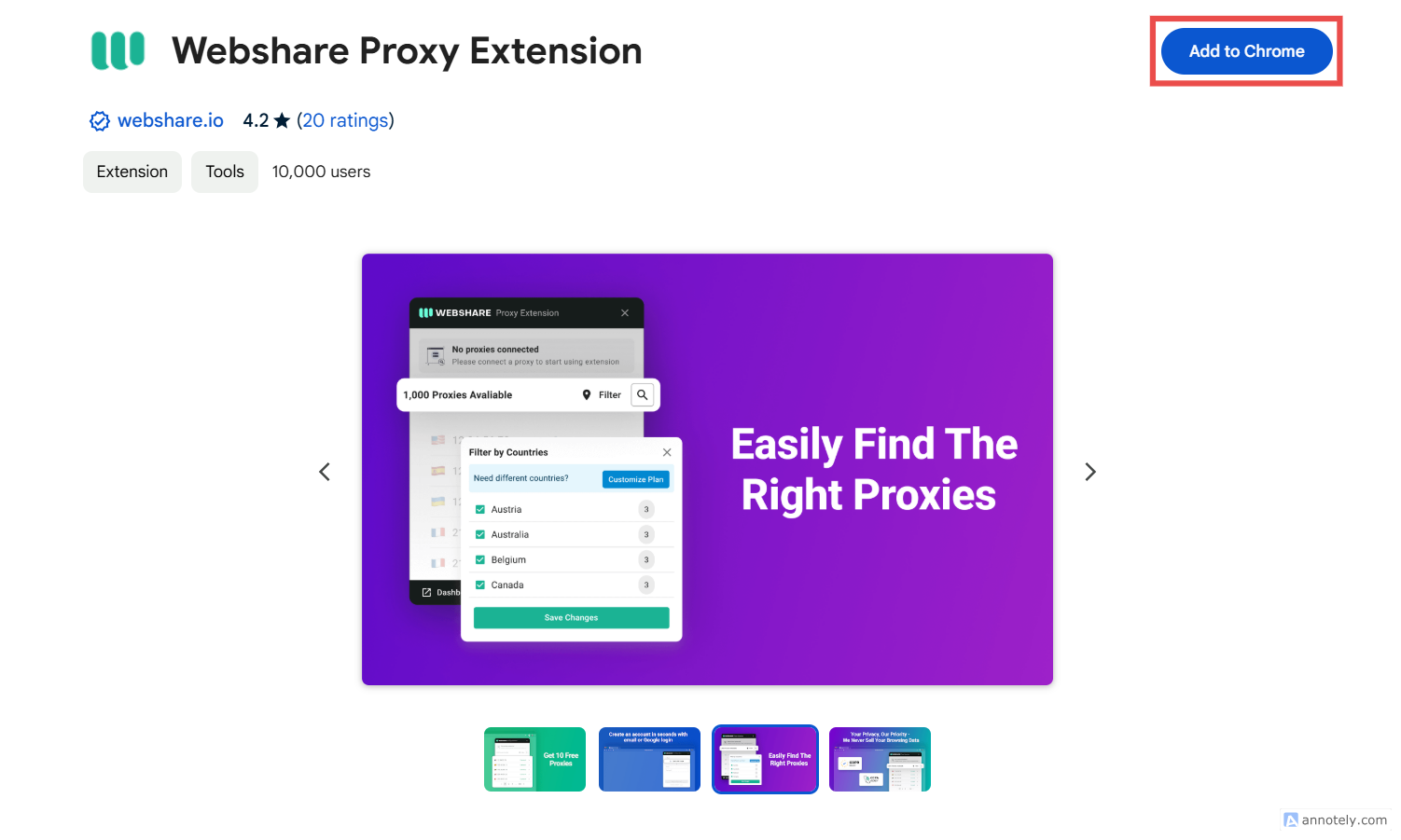
Chrome would immediately activate the extension after installation. However, if it's not activated, type “chrome://extensions” in your address bar to open the extension manager, then toggle on the Webshare Proxy Extension.
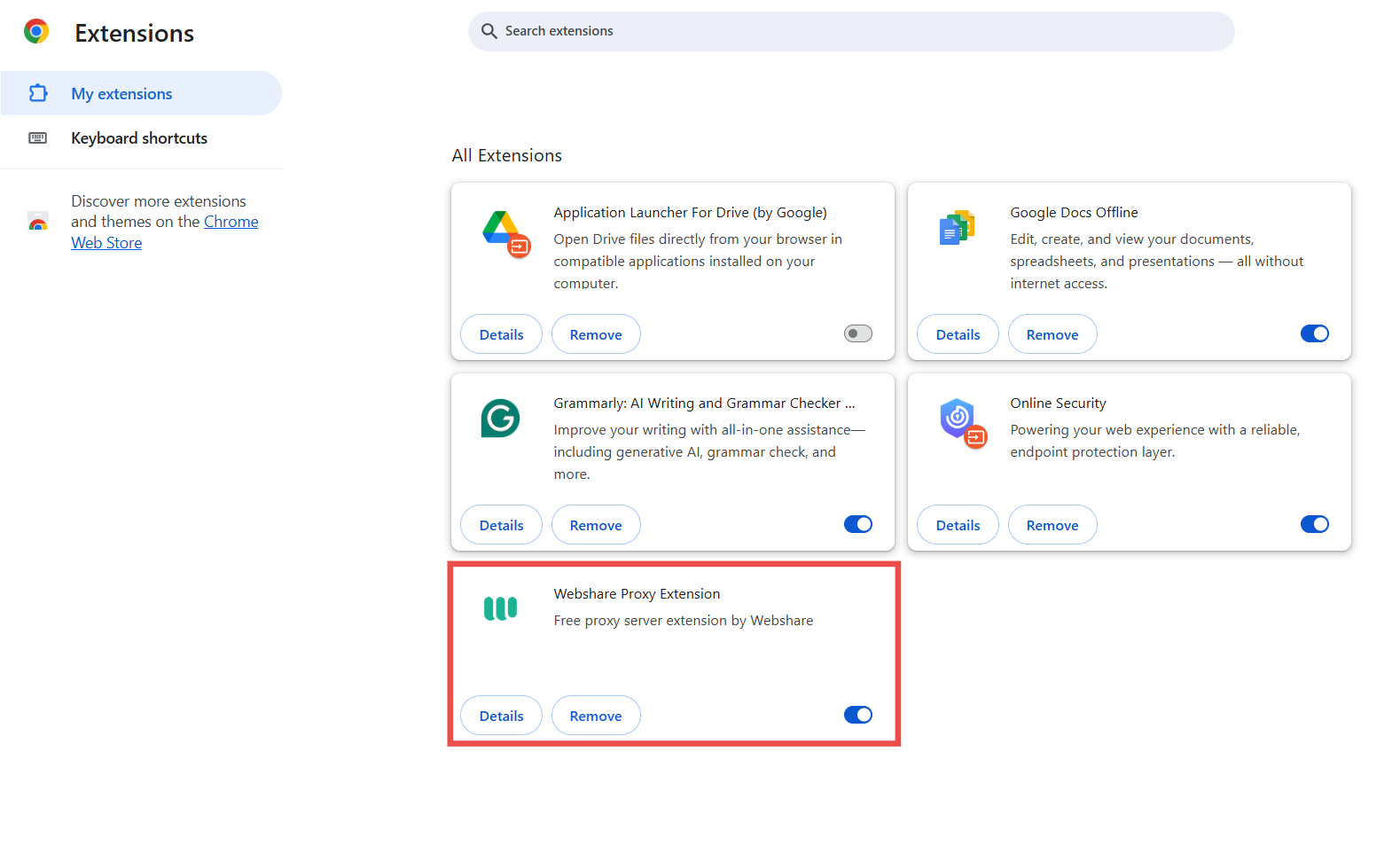
Step 2: Connect to a proxy
Locate the Webshare Proxy Extension on the Chrome extensions tab and click on it. You may be prompted to sign in to your Webshare account if you aren’t already signed in. Simply follow the instructions to log in.
On the Webshare Proxy Extension, you’d find a list of available proxies, each with an IP address and a country flag next to it. The flag indicates the country hosting the physical servers that reroute your internet traffic. So, it's best to select a country that allows Slack connections.
Select a proxy from the available list and click Connect.
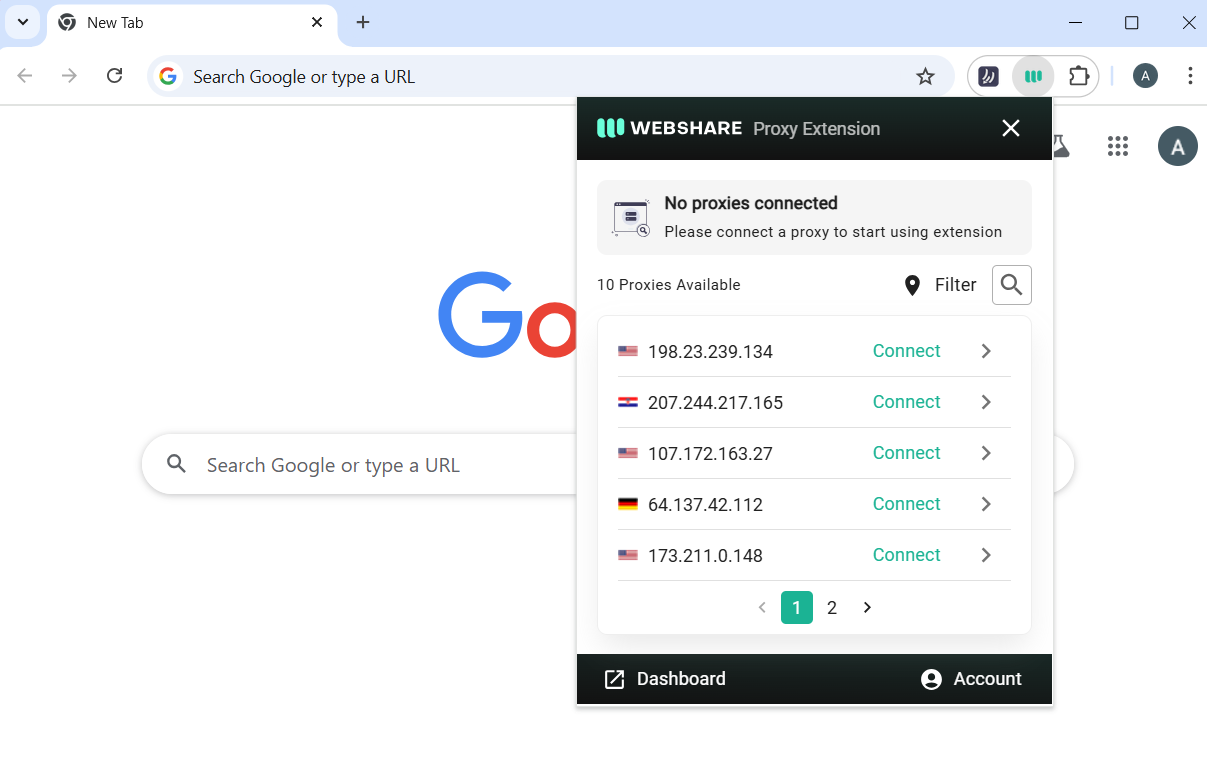
Some proxies may require you to sign in to their servers after connecting or when you try to access Slack. Retrieve your username and password from the Proxy Details by clicking the arrow next to the proxy’s IP address.

Slack proxy for Windows instructions
Windows automatically detects proxy settings from your Wi-Fi and Internet Service Provider (ISP). However, it also provides the option to manually configure a proxy connection for your Wi-Fi or turn it off entirely.
Follow these two easy steps to set up a manual proxy for your Windows PC.
Step 1: Open the Proxy settings:
Search for “Settings” in the Windows search bar and click Open to launch the application. You can also press Windows key + I to open the Settings application from anywhere on your PC. After the app opens, navigate to Network & internet > Proxy.

The Proxy configuration menu shows two options—Automatic proxy setup and Manual proxy setup. Your PC defaults to automatic settings unless you specifically enable a proxy server. To configure your proxy, select the Set up button in the Manual proxy setup section. If you have previously configured settings, click the Edit button instead.
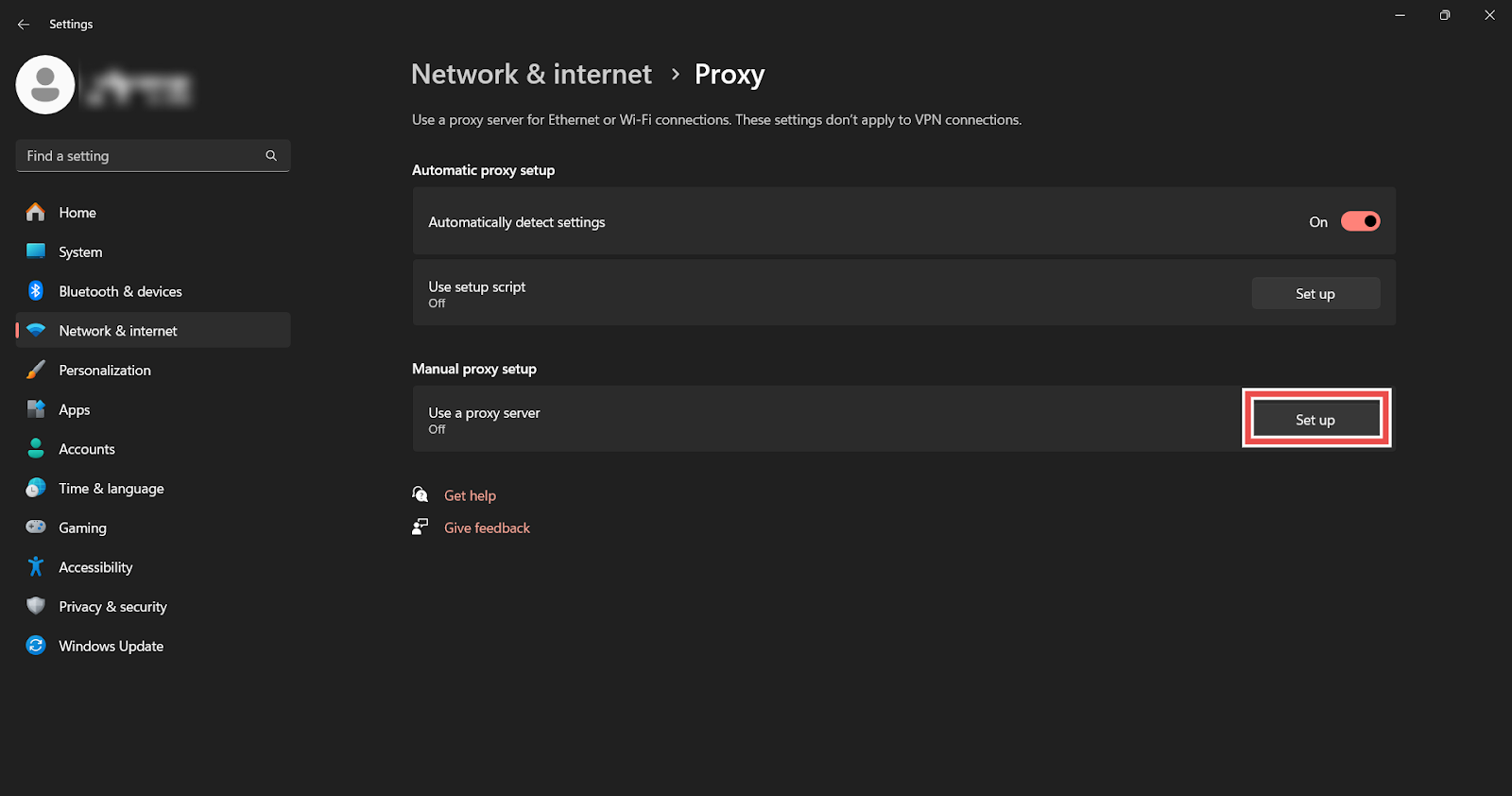
Step 2: Use Manual proxy setup
Once you click Set up or Edit, you’ll be prompted to configure your proxy server.
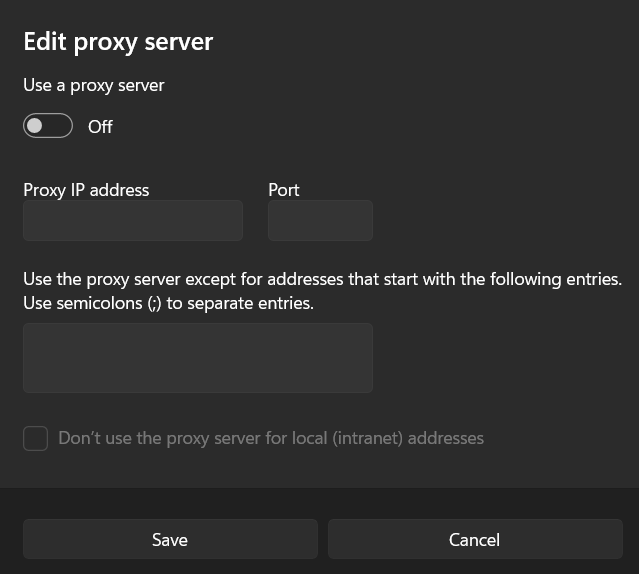
First, toggle on Use a proxy server to enable the appropriate input fields, then enter your desired proxy IP address and port. You can select a suitable proxy from the list of available proxies on your Webshare account.
Click on Save to start using the proxy on your PC.
This proxy configuration routes all internet traffic from your computer, affecting both standalone apps and web browsers. With this single setup, both the desktop Slack client and browser-based Slack app will always connect through your proxy.
Slack proxy for Android instructions
Android's diverse ecosystem cuts across hundreds of manufacturers and operating systems, but the proxy setup process is largely consistent across devices.
Despite the various themes, interfaces, and menu layouts, you can confidently follow these instructions to configure a Slack proxy on any Android device.
Step 1: Open Wi-Fi settings
To access your Wi-Fi settings, swipe down to open the Quick Settings panel and hold down the Wi-Fi icon. Alternatively, open the Settings app and go to Connections > Wi-Fi.
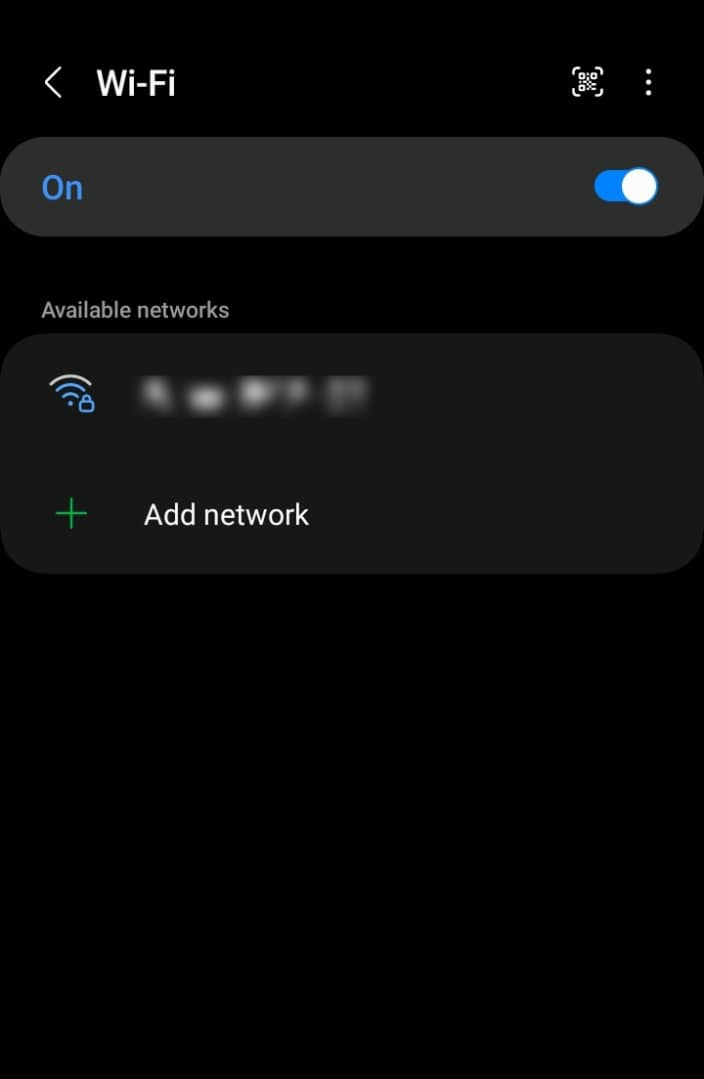
Select the Wi-Fi you want to connect to and enter its password if required. After connecting to the Wi-Fi, tap on its name to open its configuration options. On some other devices, you may need to tap on the gear icon next to the name.
Step 2 Configure Proxy Settings
On the Wi-Fi configuration menu, scroll down until you find the Proxy settings. Some devices hide this setting in Advanced Settings, while others require you to tap the View More dropdown.

The Proxy settings has three options—None, Manual, and Auto-config. Select Manual to unlock the Proxy host name and Proxy port input fields for editing. Check your Webshare dashboard to find the proxy details for your desired proxy and fill out the fields.
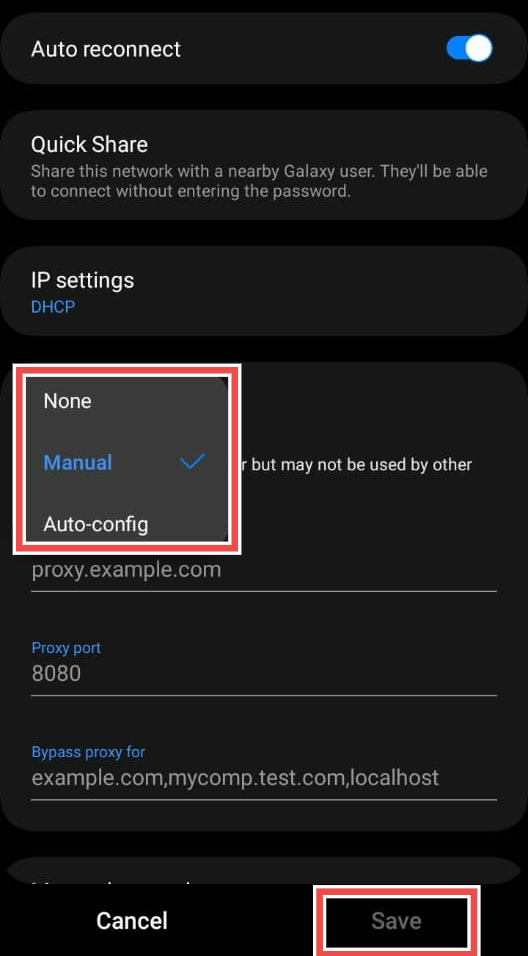
Tap on Save to apply the proxy on your Android device. You may need to sign in to the proxy server after setting it up or when trying to browse the internet. To do this, simply use the username and password from the proxy details.
How to test Slack proxy?
Once you've configured a proxy server on your Windows device or Chrome browser, it's a good idea to test it with Slack. Open your browser and go to the Slack App website. If the page loads and asks for proxy authentication, enter your proxy username and password.
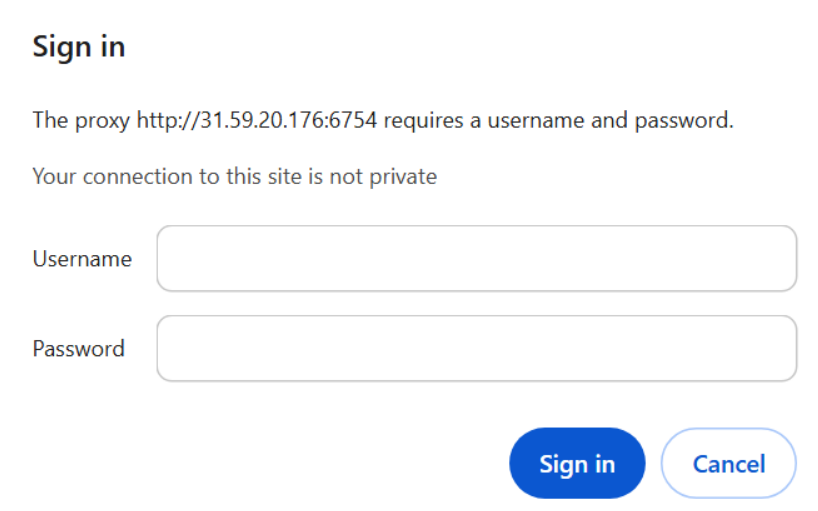
Try signing in to Slack using your preferred authentication method. If you’re able to log in successfully, the proxy is functioning correctly.
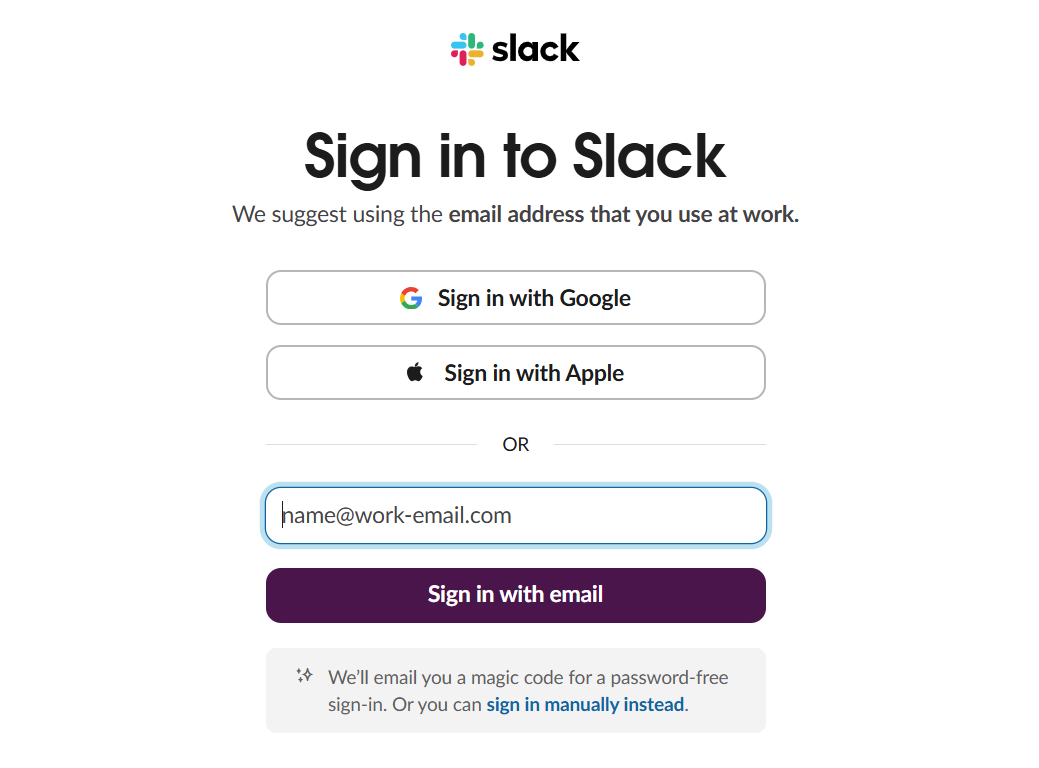
After signing in to Slack select your desired workspace or create a new workspace if you want to use Slack with another team.
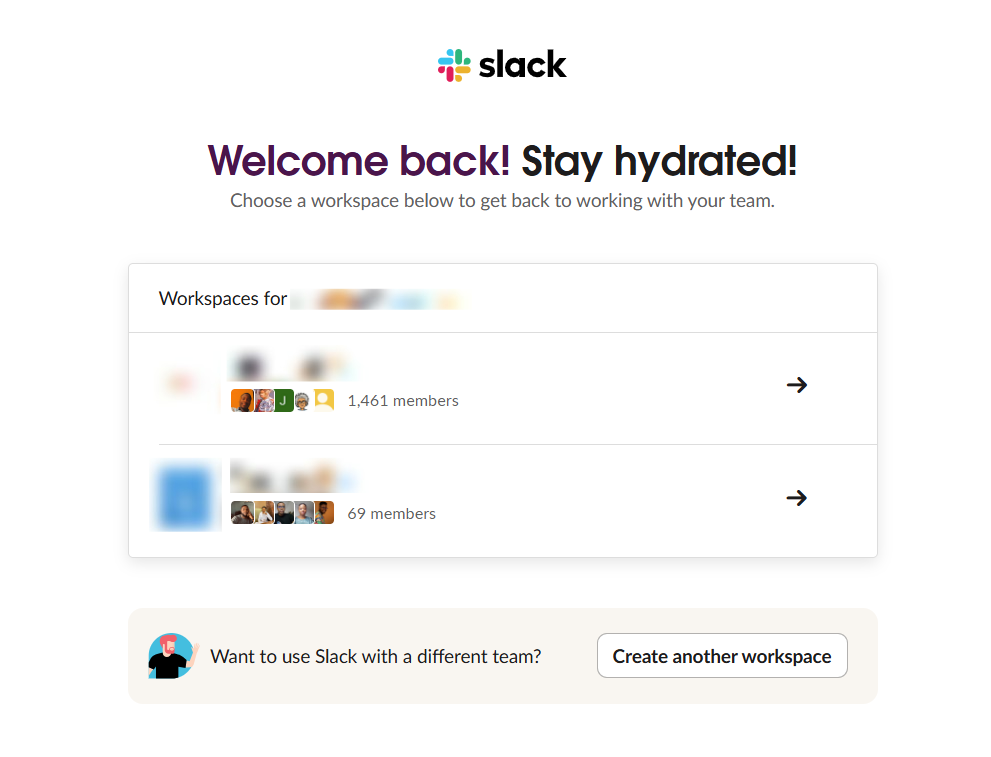
Once you’ve selected a workspace, Slack attempts to open it on the desktop app, but you can choose to launch it on your browser instead. Simply click “use Slack in your browser”. The interface is identical, providing full access to your messages, channels and workspace features.

On Android devices, your Slack workspaces are not available in the browser. However, you can download the Slack app from Google Play and sign in to your account as usual.
You can also verify that the proxy works by using online IP-checking tools like WhatIsMyIP. Simply visit the site, and it will display details such as your public IP address, location, and ISP. Check that the shown information matches with the proxy you're using.

How to turn off Slack proxy?
A Slack proxy connection can enhance your privacy and help you regain access to restricted accounts. However, there are situations when you might want to disable your proxy.
Proxy servers can sometimes cause performance issues, such as delayed messages and voice call latency. If you're experiencing these problems, you may want to temporarily disable your proxy.
Below you'll find step-by-step instructions for turning off proxy servers across different platforms:
Turn off Slack proxy on Chrome extension
Find the Webshare Proxy Extension on the Chrome extension tab and click on it. If you’re connected to a proxy, click on Disconnect to disable the proxy instantly.
When you need to restore your proxy connection, open the extension again and click on Connect. This simple on/off functionality allows for seamless transition between direct and proxy-routed connections without complex configurations each time.
Turn off Slack proxy on Windows
To access your system's proxy configuration through the Settings app, select Network & internet, then navigate to the Proxy section. In the Proxy settings, scroll down to the Manual proxy setup and click the Edit button to modify your current settings.
Disable the proxy by toggling off Use a proxy server. This action will automatically gray out the Proxy IP address and Port input fields, indicating they are no longer active.
Finish the process by clicking Save. Your system will immediately apply these changes and revert back to a direct internet connection.
Turn off Slack proxy on Android
Access your device's network configuration by opening the Settings app. Navigate to your Connections settings and select Wi-Fi from the available options.
From the list of available networks, select the network name where your proxy is currently active. Some Android versions may require you to tap the settings icon next to the network name instead.
Within the Wi-Fi’s settings page, scroll until you find the Proxy settings, then tap it to view three configuration options—None, Manual, and Auto-config. Select None or Auto-config to disable the manual proxy settings.
Confirm your changes by tapping Save. The Proxy host name and Proxy port fields should be grayed out, indicating that the proxy has been successfully disabled.
Final Thoughts: What is the best proxy to use with Slack?
When it comes to proxy solutions for Slack, Webshare stands out as the superior option among the many alternatives available. What sets Webshare apart is its balance of accessibility, performance, and value for money.







